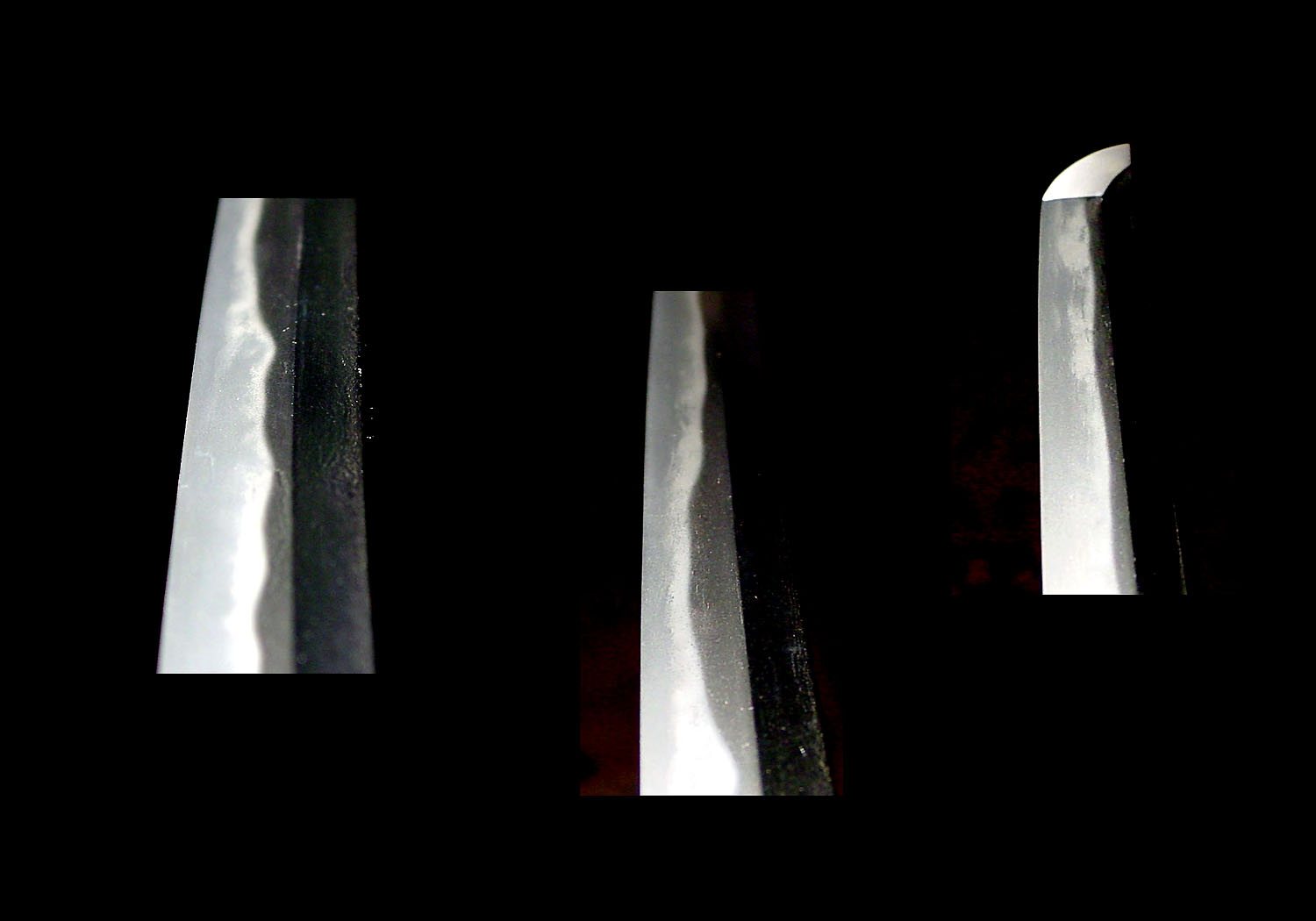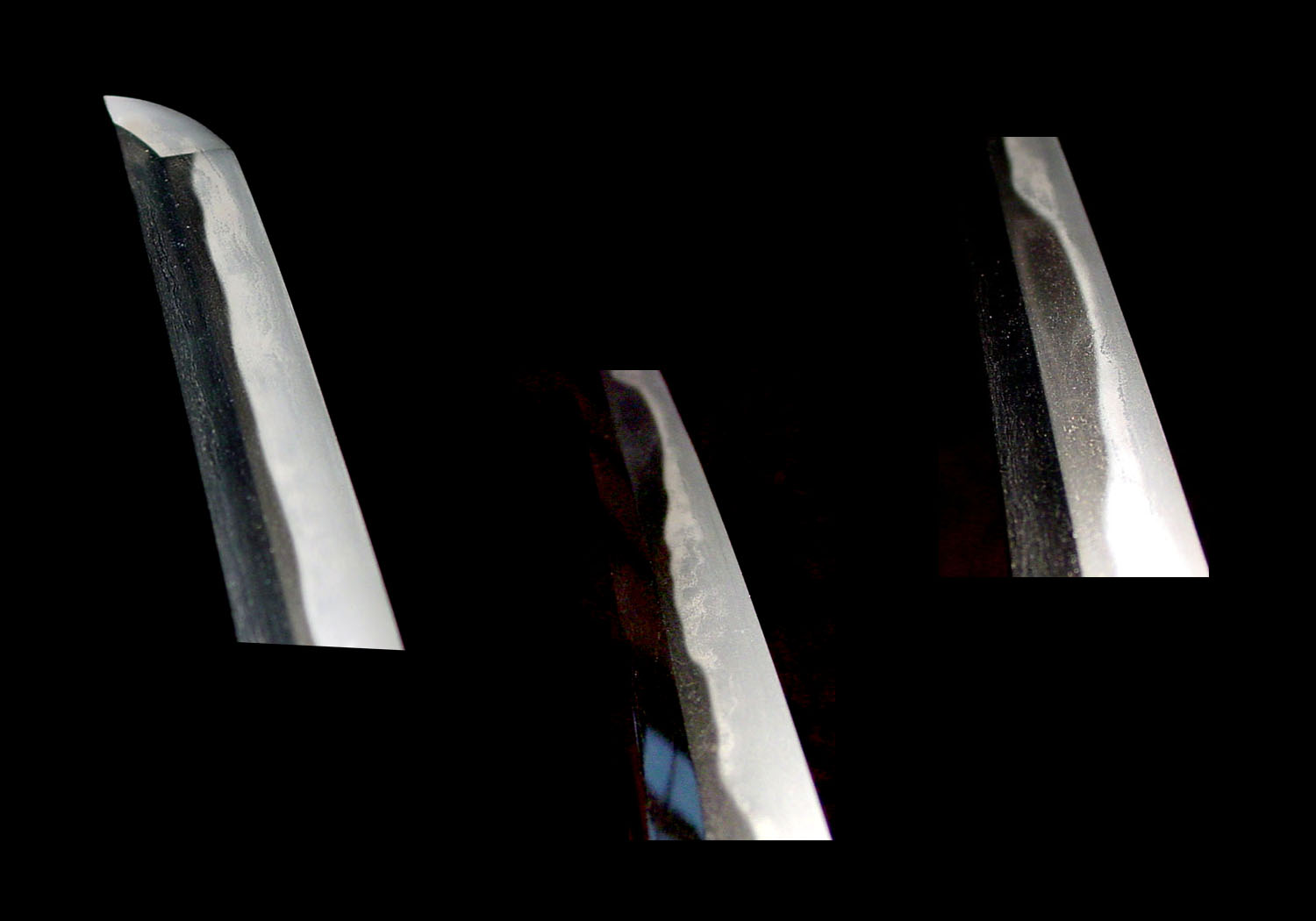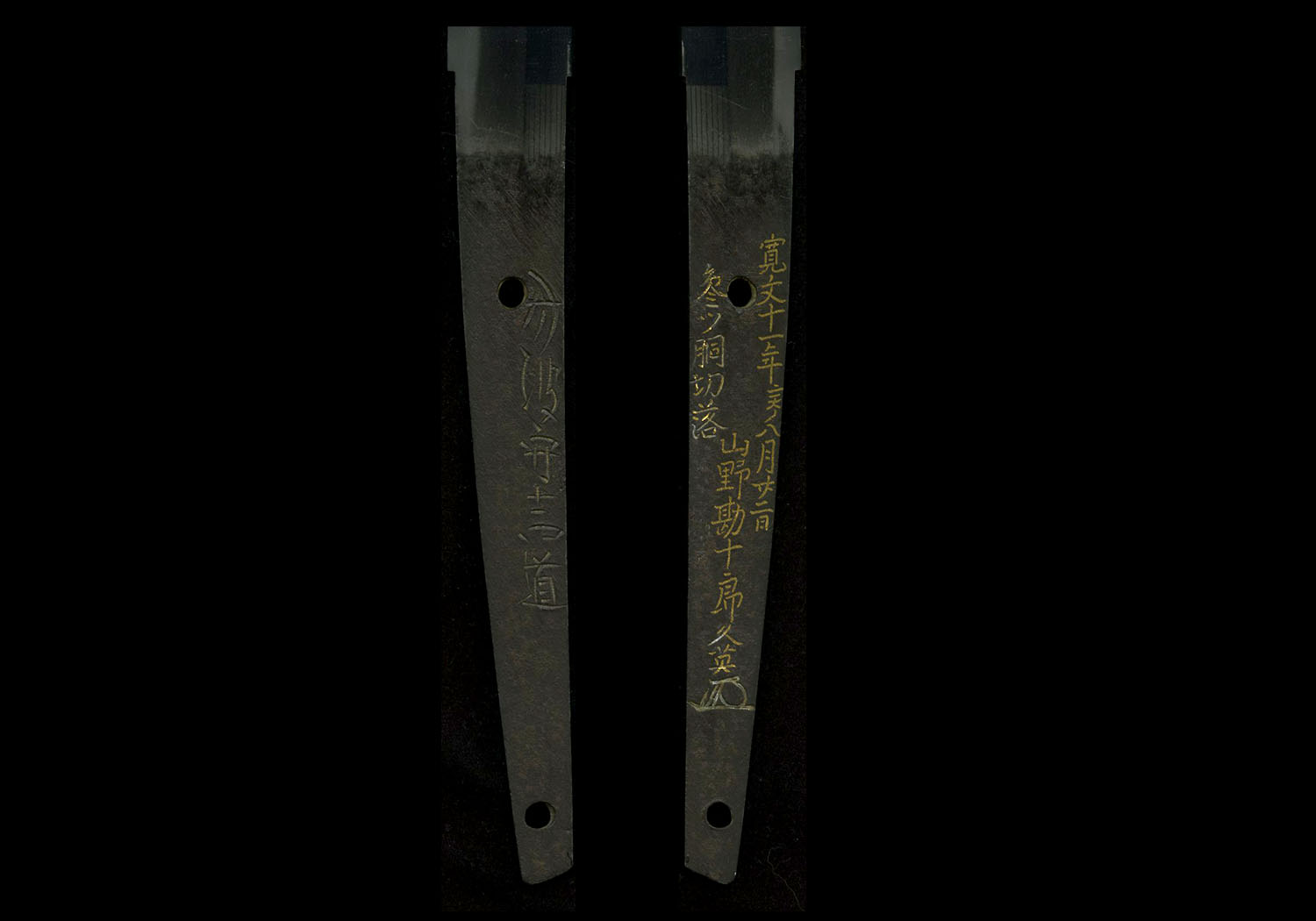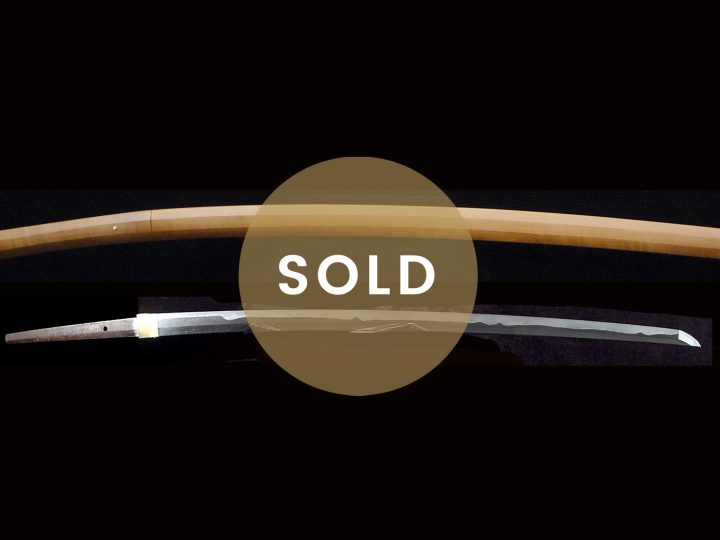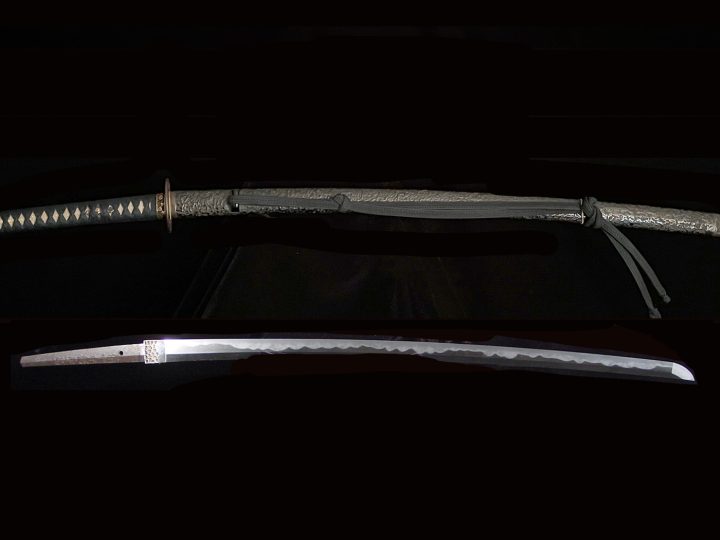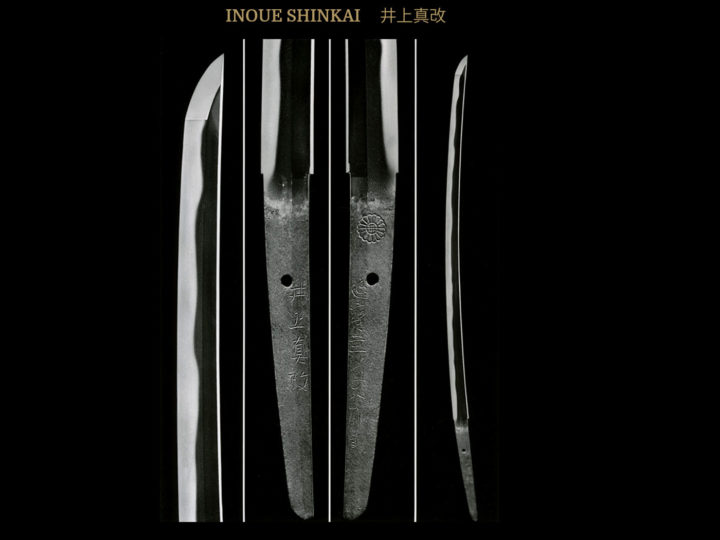
The founder of the Mishina (三品) school was Kanemichi (兼道) who lived in Seki (関), Mino (美濃) province, at the close of the Muromachi era. He had four sons, Iga no Kami Kinmichi (伊賀守金道) was the eldest and Rai Kinmichi (来金道) was the second oldest. Next came his third son, Tanba no Kami Yoshimichi (丹波守吉道), and his fourth son was Etchu no Kami Masatoshi (越中守正俊).
His third son, Tanba no Kami Yoshimichi (丹波守吉道), is well known as the founder of the school that created the sudare-ba hamon. The sudare-ba temper line got its name because of the presence of sunagashi that resembles a sudare (reed or rattan screen). The main branch of his family is called the Kyô-Tanba (京丹波) as they settled in Kyôtô and remained there for generations. The second son of the shodai Tanba no Kami Yoshimichi (初代丹波守吉道), however, left Kyôtô and moved to Ôsaka and was also given the title of Tanba no Kami (丹波守). He started a branch family and became known as the shodai Tanba no Kami Yoshimichi (初代丹波守吉道)of the Ôsaka Yoshimichi (大坂吉道) lineage.
Ôsaka Shodai Yoshimichi (大坂初代吉道)was called Mishina Kaneuemon (三品金右衛門) and he received the title of Tanba no Kami (丹波守) around Shôhô (1644). He was 70 years of age in the seventh year of Kanbun (1667). This means he would have been born in 1597. Unlike many of the other smiths in the Yoshimichi (吉道) line, he did not inscribe the kiku mon on his nakago. He is rated as a ryô-wazamono smith. This is a list of sword makers compiled in 1815 by Yamada Asaemon (山田朝右衞門) descended from a direct line of official sword testers for the bakufu during the Edo Period, every generation of whom inherited that name. This rating means that his swords were judged to cut very well on a consistent basis. This is further evidenced by the cutting test inscribed into the tang of the subject blade for this article.
The second son of the shodai Ôsaka Tanba no Kami Yoshimichi (初代大坂初代吉道) started a branch family of his own, and called himself Yamato no Kami Yoshimichi (大和守吉道). This line of smiths continued for several generations.
Some of the general characteristics of the Yoshimichi (吉道系) school are as follows:
SUGATA: There are katana, shinogi-zukuri wakizashi, hira-zukuri, and sunnobi tantô. Katana and wakizashi have a wide mihaba, shallow sori, and relatively large chu-kissaki. Sunnobi tantô have wide mihaba, sori, and thick kasane.
JITETSU: The jigane is somewhat hard, and the jihada is a ko-mokume or ko-itame. There will be masame above the shinogi-ji recalling the family’s Mino origins. The jihada of the later generations becomes clear but will have few hataraki.
HAMON: Kyô or Ôsaka yakidashi (depending on the branch school) is occasionally mixed with midare. Wide hamon consists of nie and is mixed in many cases with yahazu midare and hako midare. This school is most noted for its sudareba hamon formed from sunagashi. Production of this exuberant sudareba hamon began in earnest with the nidai Kyô Yoshimichi and was carried down through the lines of the succeeding smiths of the main and splinter schools.
BÔSHI: There will be a Mishina bôshi which starts with a shallow notare and has a slightly tapered tip (tending to be jizo) which creeps upward toward the munesaki. Or in the case of the Kyô school, it will tend to be ko-maru agari, with relative narrow yakihaba and nie.
HORIMONO: Bo-hi and futatsuji-hi can be seen at times.
NAKAGO: Iriyamagata is generally seen. Ha agari-kurijiri will be rare in Yoshimichi’s works.
MEI: The Ôsaka Shodai Yoshimichi signed as follows:
TANBA NO KAMI YOSHIMICHI 丹波守吉道
TANBA NO KAMI YOSHIMICHI TSUKURU 丹波守吉道造


